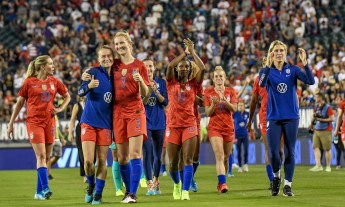
In 1936 Jesse Owens broke the world record for the 100-meter dash in a mind-boggling 10.3 seconds. Yet had he raced in the 2013 World Championships, he would have had another 4 meters to go when Usain Bolt won in 9.58 seconds. That tremendous difference in performance is apparent across the sports world — cycling, gymnastics, the NBA — so what’s going on? Are humans evolving quickly enough to be freakishly better at sports than our counterparts from a mere century ago? Journalist David Epstein says no. In his TED Talk Are athletes really getting faster, better, stronger? Epstein looks at factors from across the past fifty years that have led to us to be much better at (some) sports. Bonus: Learn even more from his detailed footnotes.
Below, read five sources chosen by Epstein that dive deeper into sports history and science.
How we’ve changed as athletes
1. “Morphological evolution of athletes over the 20th century”
Kevin Norton and Tim Olds
Sports Medicine, September 2001
“This is a great introduction to the work of ‘Big Bang of Body Types’ scientists, who look at height versus mass across sports in the latter half of the 20th century.”
2. Why We Run
Bernd Heinrich
Harper Perennial, 2002
“Written by a biologist and ultramarathoner, this book is a fascinating look at how endurance has shaped physiology throughout the animal kingdom. (Endurance flying, endurance running, even frogs and their endurance croaking!) Heinrich gives poetic treatment to the role of ultra-endurance in human evolution, and applies some of what he learns while studying animals to his own training. It works out pretty well, as he sets an American record at the North American 100-kilometer championships.”
3. The Four-Minute Mile
Roger Bannister
The Lyons Press, 2004
“Shortly after breaking the four-minute barrier, Bannister — still a med student — sat down to write a book about it. Elite athletes were truly amateurs at the time, and it’s a wonderful look at a bygone era of sports. Bannister debunks some common myths — like that scientists were telling him his legs would crumble if he ran under four minutes — and crafts some terrifically expressive passages. Of his condition upon crossing the finish line, he writes: ‘I felt like an exploded flashlight with no will to live.'”
4. “Following the Trail of Broken Hearts”
David Epstein
Sports Illustrated, December 10, 2007
“I was at one time a competitive runner and science grad student, and it was the sudden death of a friend and training partner — steps after a mile race — that first got me interested in genetics and sports. This article was the first one that I published on the topic of sudden death in athletes, and touches on what can be done so that fewer athletes will die of sudden cardiac arrest in the future.”
Not much for exercise? Start here …
5. Which Comes First, Cardio or Weights?
Alex Hutchinson
HarperCollins, 2011
“If you’re interested in sports science or medicine generally, but don’t want to start perusing technical journals on your own time, this book rounds up a massive amount of exercise science and presents it in a manner anyone can understand. And it’s easily searchable so you can jump to information that might be pertinent to your own fitness goals.”
[ted id=1986]
Featured image credit: istockphoto











